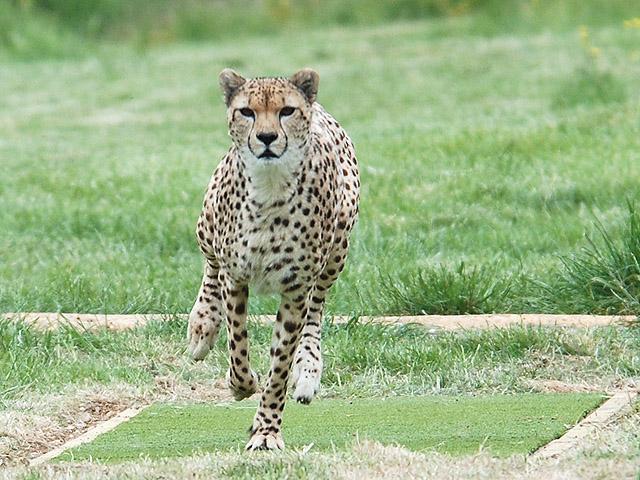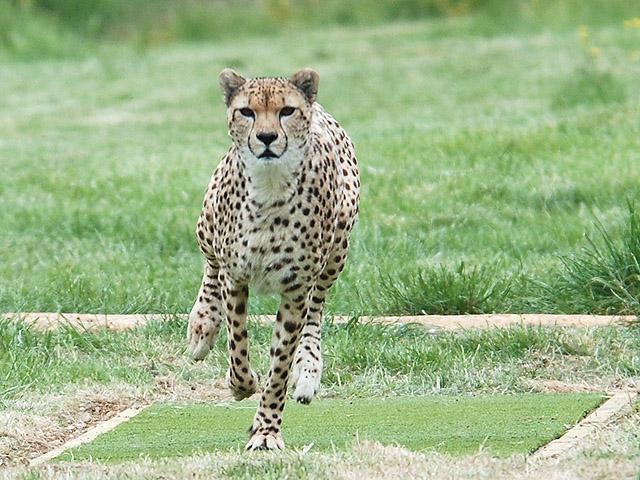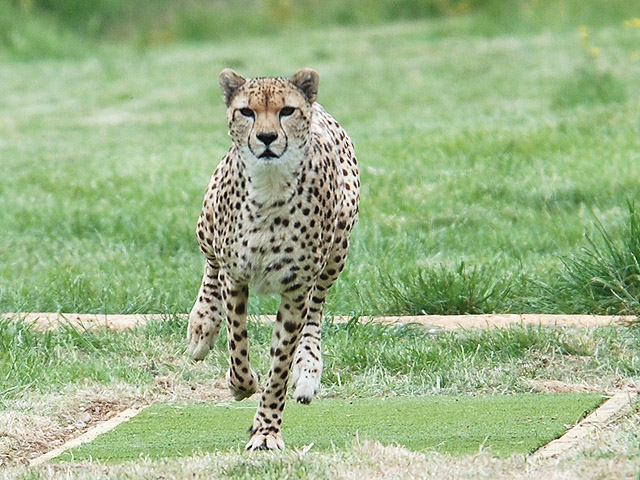[video]http://www.youtube.com/watch?v=0v_pOLOCXnQ[/video]
Despite their similar size and morphology, cheetahs can effortlessly outrun greyhounds.
A new study gives clues to the mechanical differences that enable these swift felines to achieve their maximum recorded speed of 29 meters per second (65 miles per hour).
Scientists in the United Kingdom and South Africa compared the sprint style of captive cheetahs with trained greyhounds to better understand the potential limits to running speeds in four-legged animals.
“Cheetahs and greyhounds are known to use a rotary gallop and physically they are remarkably similar, yet there is this bewitching difference in maximum speed of almost a factor of two,” said study co-author Alan Wilson from the Royal Veterinary College, London, in a press release.






